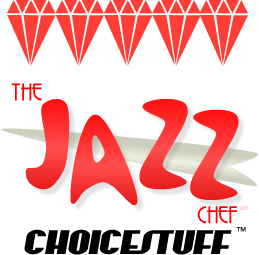Product Description
If you’re looking to take your cooking up to an A+ game, invest slowly in a great set of knives that will last your whole life. Global is definitely the way to go!
The G-21, 6.25″ (16 cm.) Cromova boning knife is an exceptional kitchen tool that will help you with a lot more prep tasks than simply boning or trimming meats. The Flexible knife is good for quickly coring out a large cauliflower, thin slicing house-cured gravlax, and working with other foods where a little flexibility makes for easier work.
THE COOK’S TOUR
With due respect to the Germans and Swiss, the Japanese own the kitchen knife biz. Their legendary blades are only part of the story. Japanese steel’s the real deal. Wusthof, or Henckels, knives’ blades just don’t keep the same kind of wonderful edge.
That’s because Global uses a significantly harder steel, its own formulation for the metal, CROMOVA 18. It’s a secret mixture of molybdenum, vanadium and chromium. A high chromium content keeps the steel stainless and corrosion-free. It was part of the spare-no-expense design of the knife line back in the 1980s.
 Yoshikin’s Global knives, like many Japanese brands, are ground to a point, as opposed to a beveled edge. That results in a dramatically sharper knife that will keep its edge sharper.
Yoshikin’s Global knives, like many Japanese brands, are ground to a point, as opposed to a beveled edge. That results in a dramatically sharper knife that will keep its edge sharper.
It also means that you have to be good to your knives. Don’t use them to hack open boxes, or for non-kitchen work. Use a quality sharpener built for Japanese knives, or a good hand-sharpen kit, regularly. More on that in my articles on how to care for great knives.
Global’s unibody, one-piece design is lighter, with no seams to fall apart slowly over time. Unlike the Shuns, they have no fussy wood to keep clean with another step. The handles are hollowed out which reduces weight, and improves balance.
HANDLE HAPPINESS
Global’s ergonomic, positive-grip handles with the black dots are great when you’re moving between prep and cutting and your hands get a little slippery. The wood handles can slide. That means stopping more to keep the equipment and hands clean, or a slip here or two which can wreck products, or… fingers?
These are the best balanced knives that I’ve ever used, which is why, even when people try to get me to switch, I shun the Shun and say ‘sayonara’ to Santoku.
POWERING-UP PREP
You’ll be amazed, if you have used cheaper knives, or “fine” knives that aren’t Japanese, how much better and easier it is to prep with a truly great knife. It’s amazing how much better the food that you serve will look and taste when you can get the textures right for both cooking and presentation.
The Santokus are all-purpose knives. You can slice, chop, dice, and more. The blade is long enough to tackle bigger items, yet refined enough to slice a potato wafer thin without a mandolin, or other space-occupying gizmo.
They’re super-easy to clean, and they need to be stored BLADE UP in a knife rack to avoid dulling or damaging the blades.
WARNING
Hand sharpen or professionally sharpen these knives. DO NOT use a machine. Most of the machines are designed for beveled edge blades and they will dull or wreck your Global.
BACKSTORY
Yoshikin is a Japanese firm in Tsubame that has largely made cutlery for Western markets. In 1983, designer Komin Yomada was hired on a spare-no-expense budget to design a world-class knife that could be used by professionals and home chefs alike. The result was their Global line, introduced in 1985. Other than expand the choice of blade options, you don’t mess with perfection.
MY TAKE
Even within the Japanese manufacturers, Global stands out handle-and-blade above the others. I’ll take a Global over a Shun, Santoku, Miyabi or Sakai any day of the week. Go Global, and you’ll have knives for a lifetime, and pass them on to your future home chefs.
I’m not alone. Pros from the late Anthony Bourdain, to the Iron Chefs, to Giada De Laurentiis, all go Global.
If I could give them eight diamonds, I would.









Reviews
There are no reviews yet.